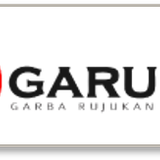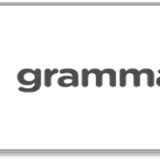Owners Ethnicity And Strategic Management Accounting
DOI:
https://doi.org/10.24912/ja.v23i2.575Abstract
This study aims to prove differences in the level of the role of accountant and the implementation of strategic management accounting based on ethnicity categories of hotel owners. The study is conducted with quantitative methods using primary data through a survey of hotel general managers/leaders in the Sumatra region. A total of 395 questionnaires are distributed to the hotel general managers/leaders. The number of questionnaires used in this study is 224. Mann-Whitney nonparametric tests for two independent samples analysis is used to test research hypotheses. The results of the study indicate that there are differences in the role of accountant and the implementation of strategic management accounting based on differences in ethnicity of the hotel owners.
References
BadanPusatStatistik. (2016). Statistik hotel dan akomodasi lainnya di Indonesia 2016. Jakarta: Badan Pusat Statistik.
BadanPusatStatistik. (2015). Statistik hotel dan akomodasi lainnya di Indonesia 2015. Jakarta: Badan Pusat Statistik.
BadanPusatStatistik. (2014). Statistik hotel dan akomodasi lainnya di Indonesia 2014. Jakarta: Badan Pusat Statistik.
BadanPusatStatistik. (2013). Statistik hotel dan akomodasi lainnya di Indonesia 2013. Jakarta: Badan Pusat Statistik.
BadanPusatStatistik. (2012). Statistik hotel dan akomodasi lainnya di Indonesia 2012. Jakarta: Badan Pusat Statistik.
Bachtiar, N. and Amalia, R. (2012). “Analisis faktor-faktor yang mempengaruhi motivasi berwirausaha di kota Pekanbaru”. Jurnal Kependudukan Indonesia. 7(1). pp. 93 – 144.
Bisbe, J and Malagueno, R. (2012). “Using strategic performance measurement systems for strategy formulation: Does it work in dynamic environments?” Management Accounting Research 23 (4): 296 – 311.
Blackburn, R. A. Hart, M. and Wainwright, T. (2013). “Small business performance: Business, strategy and owner‐manager characteristics”. Journal of Small Business and Enterprise Development 20 (1): 8 – 27 .
Brett, J. M. (2017). “Culture and negotiation strategy”. Journal of Business & Industrial Marketing 32 (4): 587 – 590.
Brouthers, K. D. and Roozen, F. A. (1999). “It is time to start thinking about strategic accounting?” Long Range Planning 32 (3): 311 – 322.
Cadez, S. and Guilding, C. (2008). “An exploratory investigation of an integrated contingency model of strategy management accounting”. Accounting Organizations and Society 33(7/8): 836 – 863.
Cadez, S. and Guilding, C. (2012). “Strategy, strategic management accounting dan performance: A configurational analysis.” Industrial Management & Data Systems 112 (3): 484 – 501.
Chen, Z. and Tan, K. H. (2013). “The impact of organization ownership structure on JIT implementation and production operations performance”. International Journal of Operations & Production Management 33 (9): 1202 – 1229.
Cinquini, L. and Tennuci, A. (2010). “Strategic management accounting and business strategy: Aloose coupling?” Journal of Accounting & Organizational Change 6 (2): 228 – 259.
Cleary, P. (2015). “An empirical investigation of the impact of management accounting on structural capital and business performance”. Journal of Intellectual Capital 16 (3): 566 – 586.
Collier, P. and Gregory, A. (1995). “Strategic management accounting.” International Journal of Contemporary Hospitality Management 7 (1):16 – 21.
Cravens, K. S. and Guilding, C. (2001). “An empirical study of the application of strategic management accounting techniques”. Advances in Management Accounting 10 (1): 95 – 124.
Das, K. Y. and Imon, A. H. M. R. (2016). “A brief review of tests for normality”. American Journal of Theoretical and Applied Statistics 5 (1): 5 – 12.
Fowler, C. J. (1999). “The management accontant’s role in quality management: A Queensland perspective”. International Journal of Applied Quality Management 2 (1): 41 – 57.
Friedman, A. L. and Lyne, S. R. (1997). “Activity-Based Techniques and the Death of the Beancounter”. European Accounting Review l6 (1): 19 – 44.
Guilding, C. and McManus L. (2002). “The incidence, perceived merit and antecedents of customer accounting: An exploratory note”. Accounting Organizations and Society 27 (1/2): 45 – 59.
Hofstede, G. (2011). “Dimensionalizing cultures: The hofstede model in context”. Online Readings in Psychology dan Culture 2 (1). Article 8.
Islam, J. and Hu, H. (2012). “A review of literature on contingency theory in managerial accounting”. African Journal of Business Management 6 (15): 5159 – 5164.
Kadir, N. (2014). “The influences of the performance of the owner’s business and personality-based Small and medium enterprises: A study on SME’s in Sengkang regency”. Journal of Business and Management 16 (4): 21 – 24.
Kalkan, A. Bozkurt, O. C. and Arman, M. (2014). “The Impacts of intellectual capital, innovation and organizational strategy on firm performance”. Procedia - Social and Behavioral Science 150 (September): 700 – 707.
Kania, S. M. (2010). “The role of cultural differences in forming a business strategy”. Journal of Intercultural Management 2 (2): pp. 16 – 25.
Kober, R. Ng, J. and Paul, B. J. (2007). “The interrelationship between management control mechanisms and strategy”. Management Accounting Research 18 (4): 425 – 452.
Koning, J. (2007). “Chineseness and Chinese Indonesian business practices: A generational and discursive inquiry”. East Asia 24 (2): 129 – 152.
Macinati, M. S. and Pessina, E. A. (2014). “Management accounting use and fianancial performane in public health-care organisations: Evidens from the Italian national health service”. Health Policy 117 (1): 98 – 111.
Mangundjaya, W. L.H. (2013). “Is there cultural change in the national cultures of Indonesia”. In: Yoshihisa Kashima, Emmiko S. Kashima and Ruth Beatson (Eds.). Steering the cultural dynamics. Selected papers from the 2010 Congress of the International Association for Cross-cultural Psychology. Melbourne: IACCP: 59 – 68.
McManus, L. (2013). “Customer accounting and marketing performance measures in the hotel industry: Evidence from Australia”. International Journal of Hospitality Management 33 (1): 140 – 152.
Mia, L. and Winata, L. (2014). “Manufacturing strategy and organizational performance: The role of competition and MAS information”. Journal of Accounting & Organizational Change 10 (1): 83 – 115.
Musianto, L. S. (2003). “Peran orang Tionghoa dalam perdagangan dan hidup perekonomian dalam masyarakat (Studi kepustakaan dan studi kasus tentang interaksi etnik Tionghoa dan pribumi di bidang perekonomian di Surabaya)”. Jurnal Manajemen & Kewirausahaan 5 (2): 193 – 206.
Nixon, B. and Burns, J. (2012). “The paradox of strategic management accounting”. Management Accounting Research 23 (4): 229 – 244.
Oliver, L. (1991). “Accountants as business partners”. Management Accounting 72 (12): 40 – 42.
Park, J. and Kim, H. J. (2014). “Environmental proactivity of hotel operations: Antecedents and the moderating effect of ownership type”. International Journal of Hospitality Management 37 (1): 1 – 10.
Pontjoharyo, W. (2011). “The analysis of Chinese character-based on accounting and value implications for Chinese Indonesian business”. Asia Pacific Journal of Accounting dan Finance 1 (2): 150 – 164.
Roslender, R. (1995). “Accounting for strategic positioning: Responding to the crisis in management accounting”. British Journal of Management 6 (1): 45 – 57.
Sakka, O. Barki, H. and Cote, L. (2013). “Interactive and diagnostic uses of management control system in IS projects: Antecedents and their impact on performance”. Information & Management. 50(6). pp. 265 – 274.
Semiarty, R. and Fanany, R. (2017). “The effects of local culture on hospital administration in West Sumatra, Indonesia.” Leadership in Health Services 30 (1): 59 – 67 .
Singla, C. and George, R. (2013). “Internationalization and performance: A Contextual analysis of Indian firms”. Journal of Business Research 66 (12): 2500 – 2506.
Shank, J. K. (1989). “Strategic cost management: New wine or just new bottles”. Journal of Management Accounting Research 1 (1): 47 – 65.
Spekle, R. F. and Verbeeten. F, H, M. (2014). “The use of performance measurement system in the public sector: Effects on performance”. Management Accounting Research 25 (2): 131 – 146.
Su, S. Baird, K. and Schoch, H. (2015). “The moderating effect of organisational life cycle stages on the association between the interactive and diagnostic approches to using control with organisational performance”. Management Accounting Research 26 (1): 40 – 53.
Tavitiyaman, P. Zhang, H. Q. and Qu, H. (2012). “The effect of competitive strategies and organizational structure on hotel performance”. International Journal Contemporary Hospitality Management 24 (1): 140 – 159.
Teeratansirikool, L. Siengthai, S. Badir, Y. and Charoenngam, C. (2013). “Competitive strategies and firms performance: The mediating role of performance measurement”. International Journal of Productvity and Performance Management 62 (2): 168 – 184 .
Turner, M.J. and Guilding, C. (2010). “Hotel management contracts and deficiencies in owner-operator capital expenditure goal congruency”. Journal of Hospitality and Tourism Research 34 (4): 478 – 511
Turner, M.J. and Guilding, C. (2013). “Capital budgeting implications arising from locus of hotel owner/operator power”. International Journal of Hospitality Management 35 (1): 261– 273.
Turner, M. J. Way, S. A. Hodari, D. and Witteman, W. (2017). “Hotel property performance: The role of strategic management accounting”. International Journal of Hospitality Management 63 (1): 33 – 43.
Uyar, A. and Kuzey, C. (2016). “Does management accounting mediate the relationship between cost system design and performance?” Advances in Accounting, Incorporating Advances in International Accounting 35 (1): 170 – 176.
Waweru, N. M. (2010). “The origin and evolution of management accounting: A aeview of the theoretical framework”. Problems dan Perspectives Management 8 (3): 165 – 182.
Wooldridge, B. and Floyd, S. W. (1990). “The strategy process, middle management involvement and organizational performance”. Strategic Management Journal 11: 231 – 241.
Xiao, Q. O'Neill, J. W. and Mattila, A.S. (2012). “The role of hotel owners: The influence of corporate strategies on hotel performance”. International Journal of Contemporary Hospitality Management 24 (1): 122 – 139.
Zolkiewski, J. M. and Feng, J. (2012). “Relationship portfolios and guanxi in Chinese business strategy”. Journal of Business & Industrial Marketing 27 (1):16 – 28.
Downloads
Published
How to Cite
Issue
Section
License
Copyright (c) 2019 Jurnal Akuntansi

This work is licensed under a Creative Commons Attribution-NonCommercial-ShareAlike 4.0 International License.
This journal provides immediate open access to its content on the principle that making research freely available to the public supports a greater global exchange of knowledge.

This work is licensed under a Creative Commons Attribution-NonCommercial-ShareAlike 4.0 International License



















